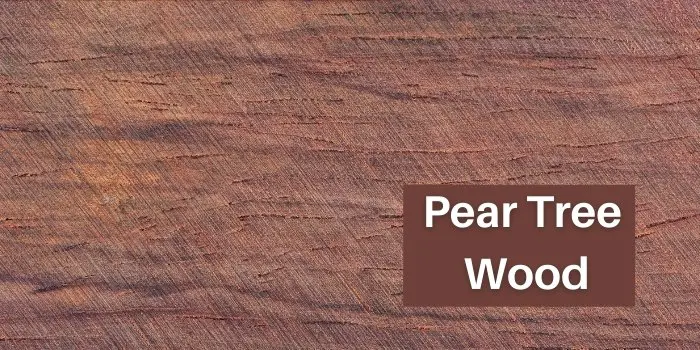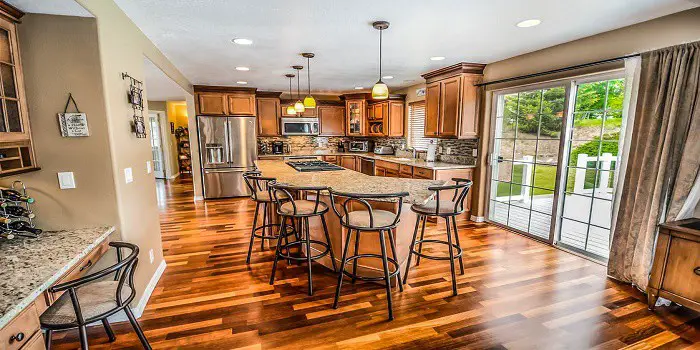
The pear tree is a relatively common tree that is primarily found in central and eastern Europe. Although its popularity is such that you can find the pear tree growing in many other parts of the world.
Called Pyrus Communis, the pear tree is known for its fruit which is quite popular around the world.
But the wood itself is also quite popular, being used in several different functions. This makes the pear tree quite versatile.
Pear Tree Wood
| Scientific Name: | Pyrus communis |
| Tree Size: | 20-30 ft (6-9 m) tall .5-1 ft (15-30 cm) trunk diameter |
| Janka Hardness: | 1,660 lbf (7,380 N) |
| Type: | Hardwood |
| Odor: | No smell |
| Specific Gravity (Basic, 12% MC): | .52, .69 |
| Common Uses: | For architectural millwork, marquetry, and furniture |
Appearance
The pear tree itself can grow to be 30’ tall with a trunk diameter of up to 1’. When cut or worked with, the wood does not give off any noticeable odor in its natural state.
Color:
You will mostly find pear tree wood ranging from pinkish or light red in the heartwood to the paler colors of the sapwood.
It’s common to find commercially available pear tree wood to be even pinker due to being steamed. This will help to deepen the natural color of the wood.
You may also find the pear wood dyed black, which can be mistaken for ebony. Otherwise, pear wood can be found in its familiar pink or light red shade.
Texture & Grains:
The texture of the pear wood is quite delicate, making it suitable for many different uses.
The grains are normally straight, which provides an advantage when creating furniture or other objects where straight lines are important.
Is Pear Tree Wood Allergic?
Although dust from virtually any type of wood, including pear tree wood, may initiate an allergic reaction, there are no additional health risks that come from this type of wood.
That means pear tree wood is relatively safe even for those who suffer from allergic reactions.
Pear Wood Workability
The pear tree wood is considered quite easy to work with. This is true for both hand and machine tools.
Given its rather flexible nature, consistency of texture and grain, and its commonality, pear tree wood is a good starting wood for many projects but is also used by professionals for certain items.
If there is a downside, pear tree wood will need to be treated to help resist rot and decay. This is about the only real negative in otherwise fine wood.
What is Pear Tree Wood Used for?
Because of its versatility, pear wood is used in a wide variety of items. The most common uses are as follows.
- Architectural Millwork
- Cabinetry
- Carving
- Furniture
- Inlay
- Marquetry
- Musical Instruments
- Turned Objects
It’s little wonder that the pear tree is a popular, premium type of hardwood in Europe, where it flourishes. However, in the US, the pear tree is not nearly as available.
This means for those living in the US, importing pear wood can be expensive.
This is why the black cherry which is more common in the US and similar in some ways to pear tree wood, is more commonly used to create similar items.
However, for those who live in Europe or have ready access to the pear tree, it is a premium hardwood that offers many attributes.

Hi, I am Mark Garner a professional carpenter, woodworker, and DIY painter. I live in the small city of Peoria, Arizona as a semi-retired woodworker. I have started this blog with a simple motive to help you with my wood experience in this sector. If you like to know more about what I love doing and how it all got started, you can check more about me here.





